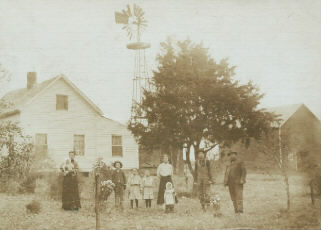Dealing with death can be grim stuff for the family of the deceased, but it is a fact of life – one with legal ramifications to boot. For survivors and heirs, probate allows for the dispersal of an estate, especially land, which back in the day when there weren’t the savings accounts, retirement accounts, or pensions we have now, was the thing of value people could own. Probate also gives family historians insight into the life of the deceased. Maybe that is why this RecordClick’s probate genealogist like it so much.
In one of my recent articles on probate – Using Probate In Genealogical Research: What Was The Family Really Like? – I wrote about the appointment of an administrator or personal representative and the role that individual plays in the settlement of an estate. In this article, however, I am going to address the probate process, which has several logical steps:
- Appointment of an administrator to oversee the probate process
- Conducting a property inventory to determine what needs to be dispersed (think assets)
- Paying debts and taxes (debits)
- Distributing the remaining property
The process seems simple enough but, as someone quite wise once stated, “the devil is in the details.”* These details are what provide information for the genealogical researcher.
There are three things the probate genealogist needs to keep in mind.
First, the law is not static – it has changed a great deal over the past several hundred years. This includes how an estate is dispersed.
Second, there is a legal term called “Joint Tenants With Right of Survivorship (JTWROS for short)” that has been in existence since circa 1900. Basically, when a couple enters into a business venture, such as purchasing a house or starting a stock portfolio, they may sign a document agreeing that when one dies the other is the owner. In this case, for the first individual who dies there may not be a will or probate.
Third, the probate genealogist process can be challenged at any stage. It isn’t over until it’s over and signed off by the judge.
So what might be a situation for which a genealogist should search for a probate?
Although there are many answers, one of the most common is when land or real estate is involved. Keep in mind that the banking industry one hundred or more years ago was not like it is now. There weren’t the savings accounts, retirement accounts or pensions we have now. The land was the thing of value people could own.
My g-g-uncle Frank didn’t have much when he died in 1920. He had been married twice, but both wives died. There were no children. What Frank did have was an 80-acre farm in Pawnee County, Nebraska; disposing of the property made probate necessary. Frank died in November. His brothers George and John were appointed administrators of the estate in December. The initial court document gave the estimated amount of the estate and listed the heirs, their relationship to Frank, and their residence.
Listing of Assets
While the first step in the probate process is the appointment of an administrator, the second step in the process is the listing of assets. In Frank’s case it was:
- Personal estate of descendant – his clothes and furniture $179.00
- The sale of his crop of oats, August 1921 43.95
- The sale of 1921 wheat 108.83
- Pasture rent for a portion of 1921 25.00
- Pasture rent for the balance of 1921 to Jan. 1, 1922 50.00
- Proceeds of the sale of the property 6500.00
For a total of $6906.78
Payment of Claims
The third step is the payment of claims as allowed by the court. Included in this part are a loss on the corn crop, purchase of fence posts, payment of taxes and court costs, a list of people to whom Frank owed money and the amount each was paid and, finally, the cost of a tombstone and perpetual care of the grave:
- Loss on sale of corn $44.57
- 1921 expenses: fence posts, 1920 taxes, court costs 165.70
- 1922 expenses:
- Claims 869.00
- Court costs 331.45
- Abstract of title 9.00
- 1921 taxes 134.75
- Monument & grave care 475.00
For a total of $2030.10
It should be remembered that the people Frank owed money to were most likely family members, friends, or business associates, and they may be of interest to the genealogist. Their records or papers may provide insight into Frank or information about his life. A doctor’s bill could tell us what Frank’s illness was. Funeral information might let us know where he was buried. The estate had $4876.68 to be dispersed.
Next time, I’ll discuss what is usually the final step in a probate case – the settlement of the estate.
Court records are some of the best sources for genealogists. A growing number of land records, wills, and probates are online. If you need help finding a court document; understanding a deed, will, or probate; or integrating new information into your family history, consider using one of the expert genealogists at RecordClick. Our network of researchers can help make the search a little easier.
The origination of the idiom “the devil is in the details” is not known specifically; however, it has been attributed to various architects, writers, and poets – from Gustave Flaubert to Ludwig Mies van der Rohe.
Photo courtesy of Joan Shurtliff







